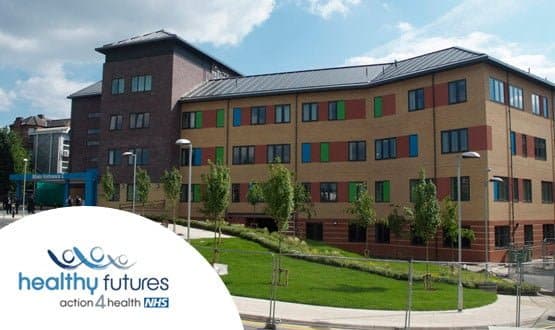The Pennine Way
- 24 September 2012

The Pennine Acute Hospitals NHS Trust has just undergone “one of the largest service reconfigurations that a trust has attempted” as a result of its ‘Healthy Futures’ programme.
The changes were planned to modernise and improve health services in north east Greater Manchester, which have been spread over anything up to five sites.
Hospitals in Oldham, Rochdale, Heywood, Bury and north Manchester have become specialised care centres, with the intention that they should become leaders in their field. To support this, a number of developments have also taken place in the IT systems that the trust uses.
Tactics and strategies
Leading the IT programme has been Christine Walters, who is associate director of IT at the trust, which employs around 10,000 staff.
“We have made a lot of progress in the past 18 months and have bought a lot of new systems in,” she says. “But because we have been waiting for the National Programme [for IT in the NHS] and we are not a foundation trust I was told very clearly that we had to take Lorenzo [CSC’s electronic patient record].
The trust approved a “tactical” IT strategy in 2010 to allow it to “move forward.” For much of that time, CSC has been locked in negotiations with the Department of Health about a new local service provider deal for the North, Midlands and East.
These negotiations recently concluded with an agreement that strips CSC of its sole right to provide IT systems to the area; but still provide for trusts that want Lorenzo to obtain central support and funding for it if they can put forward a sound business case.
Walters says Pennine Acute would be interested if Lorenzo proved “viable” in future deployments. “I think we are now about to get clarity on Lorenzo, so what I will be doing next year is completely revisiting the strategy.
“What we are going to do I don’t know yet; but we will go out to the market place and understand the options, the risk and the benefits, because to be honest there isn’t very much that is proven in this country.
“But at least we have made progress. Even if we went and decided the right thing was for us to take Lorenzo next year, for us to move off our patient administration system is – at least – a two year project.”
Introducing MedChart
Pennine Acute knows CSC quite well. It was the first trust in the UK to sign up for the company’s MedChart electronic medicines management system, and went live as an ‘early adopter’ in November last year. More than 1,000 staff have been trained on the system, which has delivered significant savings in nursing time.
“It’s an Australian product, so it needed to be anglicised and it needed to be made fit for the NHS,” Walters says. “There was a lot of work undertaken to make sure it was safe. At first there were a few problems with interfacing, so we had to fix them as you can never sacrifice patient safety.”
The trust is in the process of preparing the acute medical unit for e-prescribing and Walters admits there are still one or two system quirks that need to be improved. However, ward manager Pauline Abraham tells eHealth Insider she would be “lost” without the system as it has delivered “tremendous benefits.”
“Before we didn’t have access to the drugs that patients were on, so there would be an awful lot of running around and a lot of time wasted,” she says.
“When the ePMA system came in, a lot of people – especially dinosaurs like me – were anxious about it, but it has saved a lot of nursing time, which we are now using to treat patients instead.”
The trust also claims the system has delivered a 30% improvement in admissions, discharges and transfers. The functionality of MedChart will now be developed so that discharge summaries can be pre-populated with data, to remove the “bugbear” of typing for clinicians.
PAS times
At the heart of the trust’s IT developments, is another CSC product, PatientCentre. The patient administration system was purchased last year and sits alongside another PAS, Clinicom.
Although both are iSoft products (purchased by CSC when it acquired the company last year) PatientCentre is suitable for mobile working and provides greater functionality.
“We have taken PatientCentre as Clinicom is old; but it’s a very good system that operates the organisation very efficiently,” Walters says. “Taking it out is going to be a huge task.
“However, PatientCentre is building on what we have had. It gets around a number of deficiencies we found with the original PAS; for example that you couldn’t add fields to the system such as mobile number and indicators for cancer patients.”
Aside from the PAS, the trust has made a number of other significant investments, including new pathology, e-rostering and clinical coding systems, and an upgrade to its wireless network.
Pennine Acute plans to bring these systems together in the form of a clinical portal, which it has purchased from CSC. This is due for implementation sometime next year.
Bring us your data
Another major investment is a data centre, which is going to be offered to suppliers for hosting. This investment was initiated before Walters’ time at the trust, and she admits it wouldn’t have necessarily have been made on her watch.
“The plans for this were well done before I came and, if I am honest, I probably wouldn’t have put in a data centre; I would have looked at out-sourcing it or putting it in the cloud.
“But having said that, the trust has invested an awful lot of capital; and because we are not a foundation trust, and assets get depreciated over time, you can’t suddenly decide that you’re going to throw all your IT assets out, as that would hurt your bottom line.”
The data centre has allowed Pennine Acute to decommission a number of old computer rooms and the trust is optimistic that it will attract business from suppliers, despite the difficult economic climate.
“The trust is investing and it’s doing the right thing by putting the building blocks in for the future,” Walters says. “The capital budget is three times more than when I joined; but that’s partly because we have delivered – and if you deliver it’s easier to get that money.”
More change to come
Pennine Acute is still not immune from the financial squeeze. To make sure it is in a strong enough position to face the challenges ahead, it is channeling effort and resources into two areas; mobile working and collaborative working.
The ‘Healthy Futures’ programme is unlikely to mark the end of change for hospitals in Greater Manchester. Walters believes some will be “lost” as services are moved out into the community, a possibility that will require greater communication between the trusts in the region.
“The country cannot afford these big, expensive acutes for care which could be provided in the community,” Walters says. But, she adds: “It’s very important that if services are going to change then we, as trusts, collaborate.”
Mobile working initiatives include moving to a ‘virtual desktop’ environment, which will occur next year, and allowing doctors and nurses to access their work email from their own smartphone devices; with the software for the ‘bring your own device’ strategy already successfully piloted.
“The problem we have got at the moment is we are doing so many things, and we have got a clear vision of what we want to do, but there is a limit of what we can do because we are so big,” Walters says.
“We are trying to make the best of what we have got while we have waited for the national programme; and we have tried to do things that won’t be wasted in the future.
“Would I like to be the first to take a brand new EPR from America? Yes, but I couldn’t consider it in an organisation this big unless it was a proven solution.
“But where we can innovate, we do. We are very much about working in partnership with suppliers and I think that’s how you get the best value for the money and the best solutions to meet the organisation’s needs.
“I am lucky I have got a lot of very hard working, dedicated individuals who want to work and contribute. It’s about teamworking both within the department and across the organisation as a whole.”




